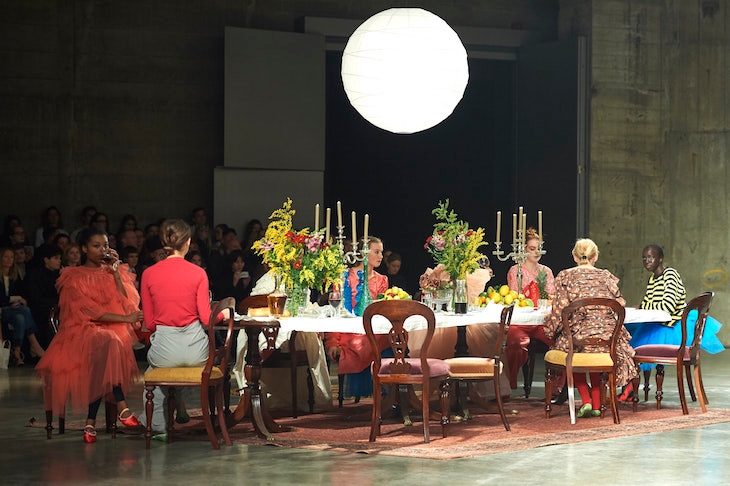Twice a year, those fortunate enough to have climbed the emotionally hazardous fashion ladder descend upon London to participate in a circus of collection displays, parties and self-funded photo shoots. Festivities ended yesterday and though there are some troubling dynamics – real time bullying of interns, unpalatably thin models, the volume of waste derived from six-inch-thick paper invites – it’s an industry that brings £26bn a year to the UK economy while showing off some of our best talent. Yet, the trending conversation in all fashion circles is whether or not Fashion Week is relevant. For an industry that is built on turning ideas around quickly, it’s astonishing that this discussion has been taking place for over 10 years with no real developments. While everyone is agreed it’s not working, there is an unhealthy preoccupation with tweaking the current form instead of simply bidding Fashion Week goodbye and moving on.
Impressively, though the voices of dissent vary wildly in tenacity and intellect, they are largely united in their arguments: fashion shows are too expensive; there’s too much pressure on designers to deliver multiple collections; there’s too much pressure on buyers/editors to view multiple collections; shows are not the optimal way to see clothes; the global e-commerce market renders fashion seasons redundant. Given that we live in a world where most people can’t agree on fairly obvious things (see climate change) this is something to be applauded and yet my hands remain unmoved because these shared truths have resulted in muted changes when what’s really required is a full-throttle revolution.
So far, in attempts to shift the status quo by a few millimetres, some designers have chosen to stream their fashion shows live (and in J.W. Anderson’s case, on an app designed for chemsex). More ambitious endeavors have concentrated on structure – Molly Goddard’s models sat at a dining table and downed wine while Charlotte Olympia presented a whodunnit black and white film at a Curzon cinema – but unfortunately, superior creative delivery doesn’t get us any closer to forming a new relationship between designers, consumers and retailers. What does hold promise is Burberry’s announcement that they will be combining menswear and womenswear collections, showing only twice a year and making the clothes available to buy straight away. In a similar vein, Vetements have decided to show outside of Fashion Week and deliver the clothes from the catwalk a month later. The leaders in the industry can’t afford for these examples to be exceptions and yet their designer-clad feet continue to drag.
A big part of the problem is that no one is particularly keen on cutting off the hand that feeds, regardless of how inept that hand is. The perils of such short-sightedness can already be seen in the huge turnaround of designers at big houses, the copy-cat clothes available on the high-street and the fatigue on display from buyers and journalists. As the situation deteriorates, what is currently a huge cash cow for the few will lead to the unraveling of the industry as a whole. I love watching a fall from grace as much as the next borderline sociopath, but given that nearly a million people are employed in fashion within the UK, it’s in everyone’s interests that a catastrophe is avoided.
One of the few slivers of wisdom thrown in my direction as a child was ‘you cannot polish a turd’, and the truth of that statement has not waned: the industry should stop smearing faeces everywhere, regroup and let Fashion Week die its much anticipated death.






Comments